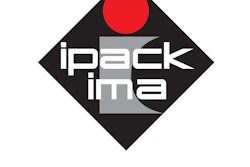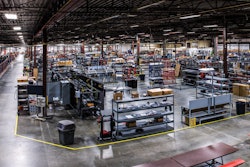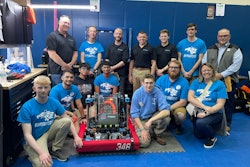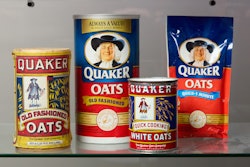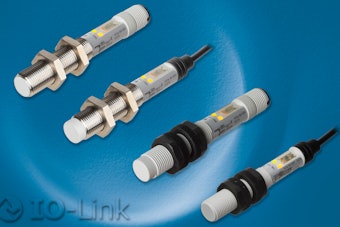Machine builders and their end-user customers are exposed to sometimes wildly different pressures, but still usually come together in a manner that’s mutually beneficial.
With these potential stumbling blocks and pain points in mind, PP-OEM and Packaging World teamed up to conduct a survey of their respective audiences. The idea was first to map out many of the key interaction points between machine buyer (Packaging World’s audience) and machine seller (PP-OEM’s audience), and then identify areas of noticeable friction.
On many of these topics, builders and buyers seemed to be in agreement, by and large. But that’s not the case across the board. The survey brought into focus several important gaps that separate the two camps. Buyers have pain points they’d like to articulate if given an opportunity. And builders have their own ideas about ways in which the gaps between the two might be better bridged, if only they had the chance.
Throughout the survey, we found many areas of strong commonality between OEMs and end users. Lead time as a major pain point is one example, as nearly half of both audiences reported that the pain of condensed lead times is one of their top three difficulties among 11 potential pain points we asked about. Builders and buyers alike also frequently reported difficulty with design changes after a signed PO (27 percent and 30 percent respectively). Builders and buyers even agreed that TCO, at least compared to the other issues presented, wasn’t much of a pain point (13 percent and 12 percent respectively).
But outside of lead time, design changes, and TCO, OEMs and end users reported differing sets of hardships. Machine builder problems were much more likely to reflect disagreements over price (41 percent compared to 26 percent) and payment terms (26 percent compared to 13 percent). Payment terms continue to be a tough issue, particularly for OEMs, as about a third of end user respondents actually report that net 90 or longer payment terms constitute fair repayment.

End users interviewed for this story were actually surprised by the leniency of OEM responses.
“To me, the surprise is that 42 percent of OEMs said net 60 is okay. We went to a net 60 model about 2 years ago, and it was a disaster as far as the OEMs were concerned. It ends up being a procurement and negotiation thing for us,” says John Giles, manager, Operations Engineering, Amway, Ada, Mich. “But we take the first stab at that net 60 days and we’re responsible for that. If the OEM doesn’t deem that acceptable, then we let them deal with our procurement department. We get out of it at that point.”
Meanwhile, end users were far more likely to cite as a pain point disagreements over what constitutes realistic OEE (37 percent compared to 12 percent, or three times more likely to find it a pain point), disagreements over after sales service (21 percent compared to six percent, or more than three times more likely to find it a pain point), and disagreement over proprietary engineering (15 percent compared to six percent, or almost three times more likely to find it a pain point).
Mark Green, manager, Global Engineering, Abbott Nutrition, Columbus, Ohio, also points to the disagreement between OEMs and end users on how long it takes to get a line or machine commercially up and running. “That’s a big part of how OEE is calculated, so really, it’s a subset of the OEE disagreement,” he says. “Both are a big problem for us as end users.”
Green says Abbott will typically put an OEE threshold in the contract as a key performance indicator. But each individual OEM that contributes to a line will say that its machine can’t be judged in a vacuum, as it’s subject to the OEE of upstream and down stream equipment. They claim end users are then holding OEMs accountable for things that are out of their control.
“But it’s a whole system,” Green says. “So in looking at this as a responsible manager, I’ve got to say, ‘It doesn’t matter if one element of this line isn’t running up to par, my whole line OEE is down. It’s all got to work together.’”
Amway uses a similar approach, and Giles also struggles with getting every OEM on the line onto the same page, and understanding what that OEE means.
“Again, OEE requirements can change based on new information, but it has to really be discussed early on between the OEMs, communicating what the end users’ situation is, and how we’re installed on the line. Are you going to apply the other pieces of equipment to that OEE number, or are you just going to treat it as a standalone? Getting everyone, OEMs and us as end users, onto the same page on all of these pain points is the real challenge,” Giles says.
See where OEMs and end users align and differ on other equipment procurement pain points: Survey says: OEMs, end users share sore spots on path to purchase

